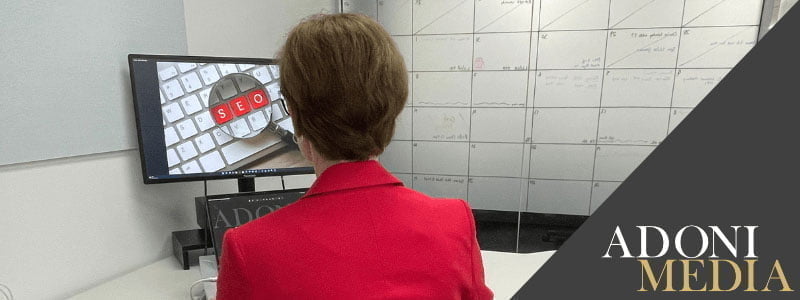What is Search Engine Optimisation? (SEO)
Every second, more than 70,000 people search Google. With 75 per cent NEVER scrolling past the first page, you cannot afford to be ignored.
Search Engine Optimisation (SEO) is the digital marketing tool to improve your ranking within search engines. The higher your SEO, the more likely you’ll appear on the first page of search results.
For any business, effective SEO means future clients and customers find you ahead of your competitors. It builds your online profile, drives traffic to your website, and creates brand awareness and trust.

How does SEO work?
Search engines, such as Google, use complex algorithms to find the most relevant and accurate content to match a person’s query and then organises these into search engine results pages (SERPs).
It can be a long process, especially for new businesses. The goal of SEO is to rank organically (unpaid) in the number one position, but it takes time and strategy.
How to boost your SEO?
If you target long-tail keywords and follow SEO best practices, you could start to see some results within a few months. On average, expect to wait 6 to 12 months to break through and build enough authority to rank on the first page of Google.
If your aim is to have more instant results, many businesses seek to combine their SEO with a broader Digital Marketing strategy or Search Engine Marketing (SEM).
Keyword research, the quality of content, crawlability, and speed are all important factors in making a search experience efficient for users. And the more efficient the experience, the higher the chance of reaching the ultimate goal of ranking number one.
How much does SEO cost?
Many businesses and websites are drawn to SEO because it is organic, meaning “free website traffic”.
But the process isn’t. SEO requires time, effort, and resources. But ultimately, the outcome is worth it, because by engaging in SEO you are better positioned to reach your target audience and drive traffic to your website.
What are the four types of SEO?
Google’s algorithm is made up of over 200 ranking signals. Each of these signals belong to four main categories: On-page SEO, Off-page SEO, Technical SEO, and User Interaction Signals.
- On-Page SEO optimises your website content by using keywords that are searched by your target audience. Keywords should be included in your page title tag, meta description, and webpage URL. Content writing, including articles and blogs that also contain keywords, is another way to help broaden your online footprint, as well as repurposing that content through your social media
- Off-Page SEO builds expertise, authority, and trust (E-A-T) from other websites. This process involves creating high-quality backlinks to your site that can be further influenced by social media shares.
- Technical SEO ensures your website is technically sufficient allowing search engines to efficiently crawl and index your site. It is important that your site architecture is set up correctly and your pages load quickly.
- User Interaction Signals relate to how users engage with your site. The more time users stay and interact with your site the better. A high bounce indicates your webpage is a bad fit and can impact your ranking significantly.
For a successful SEO strategy, a combination of all four is needed.
Why is SEO so important?
In January 1996, Bill Gates famously wrote “Content is King”.
And in this fast-paced, technology-driven world, businesses with the best content build the biggest online audiences. Greater online visibility and ranking have an impact on your bottom line.
A smart digital marketing strategy, that includes SEO, and drives trust, authority, and expertise, helps to build your company’s reputation.
A combined digital marketing and PR strategy can grow both brand awareness and market share. Adoni has digital and PR experts who work as a team to provide multi-platform support for corporate communications, government relations, and publicity campaigns.
To learn more, contact us here


